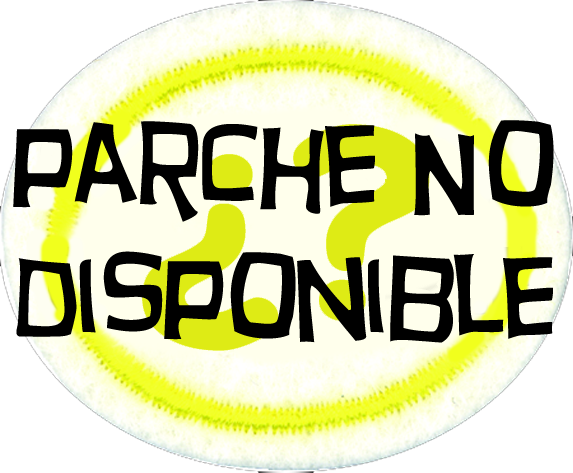Requisitos para la especialidad JA de Salud y bienestar personal
Nivel de destreza
2
Año
2024
Version
21.05.2024
Autoridad de aprobación
División Norteamericana
1. Explicar o ilustrar la diferencia entre el Bienestar y la Salud personal, y la conexión entre ellos.
2. Seleccionar una de las siguientes historias y discutir cómo siguen siendo relevantes para su salud y bienestar personal.
- El Huerto del Edén (Génesis 1:29)
- Daniel en Babilonia (Daniel 1:8-16)
- Israel en el desierto (Levítico 11 y Deuteronomio 14)
- La carta de Pablo (2 Corintios 7:1)
- Jesús y los fariseos (Matthew 15:19-20)
3. Con base en las siguientes afirmaciones, pensar en al menos tres ejemplos de cómo su salud puede afectar su capacidad de ser un «siervo de Dios y amigo de la humanidad»:
- Cita - «El Señor ha designado a los jóvenes para que acudan en su ayuda.» (Testimonios para la Iglesia, pág. 65)
- Voto del Conquistador - «Por la gracia de Dios seré puro, bondadoso y leal. Guardaré la Ley del Conquistador, seré siervo de Dios y amigo de la humanidad»
- Definición - «La salud es un estado de completo bienestar físico, mental y social, y no simplemente la ausencia de dolencias o enfermedades.»
4. Hacer una lista del significado de los principios de salud del acrónimo «ADELANTE». Luego, ordenar estos principios por orden de importancia para usted (siendo 1 el más importante) y compartir o ilustrar por qué los clasificó en ese orden.
5. Revisar y discutir la Creencia Fundamental de la Iglesia Adventista #22 “Conducta cristiana” (sección sobre la salud). Mencionar al menos tres cosas que le hayan llamado la atención.
6. ¿Cómo afectan los siguientes temas de bienestar a su salud personal?
- La aptitud física (aeróbico y anaeróbico)
- La alimentación saludable
- Los patrones de sueño saludables
- Tener una perspectiva mental positiva
- La comunidad espiritual
Para cada una de las categorías, investigar cuáles son las normas saludables para su grupo de edad. Evaluarse a sí mismo según estas normas y elegir al menos una forma de aplicarlas a su estilo de vida.
7. Seleccionar uno de los siguientes versículos y compartir algo que la Biblia dice acerca de mantener el cuerpo sano y usarlo para honrar a Dios:
- Mateo 6:22
- Romanos 12:1
- 1 Corintios 3:16 y 17
- 1 Corintios 10:31
- Efesios 2:10
8. Seleccionar dos áreas para investigar:
- Control de peso (obesidad y problemas de alimentación)
- Diabetes
- Malnutrición
- Aislamiento social y falta de autoestima
- Abuso de sustancias (alcohol, fumar, drogas recreativas, medicamentos recetados, etc.)
- Lesiones deportivas que alteran la vida
Descubrir y presentar de forma creativa lo siguiente:
- Al menos tres estadísticas acerca de cada una de sus selecciones
- Tres razones por las que los adolescentes suelen verse afectados por estos desafíos de salud
- Tres fuentes de ayuda para los jóvenes que se enfrentan con las selecciones que usted hizo
9.
Different blood tests are used by medical professionals to determine baselines for your health. Do one the following:
- Interview a medical person about the types of blood tests young people often get when being assessed for their health. Make a list of the tests they tell you about and what they say each one of them could tell you about your own health. Ask them which ones would be most healthful in assessing personal health (why are they important?).
OR
- Research what types of blood tests young people often get when being assessed for their health. Create a display that shows each of the tests, their healthy ranges and why each is important in assessing personal health.
Discover and share creatively the following:
- a.
Blood tests that are often required as a condition of employment
- b.
Blood tests that are often required as a condition of entry into a country
- c.
Whether there are blood tests required for your school or nearby educational institutions
Develop a game based on the answers you find to the following questions concerning blood:
- a.
You’re cutting bread with a knife, and you cut yourself. What cells will help stop the bleeding?
- b.
You have an earache and as a result you develop a fever. This means you probably have an infection. What cells will help fight the infection?
- c.
You are climbing a high mountain where oxygen is scarce. What can help you increase oxygen flow to your body?
- d.
You feel generally tired but can’t think of why that might be the case. What do you think the doctor will test you for?
- e.
During cancer treatment these cells can be decreased due to radiation. In turn, this can reduce the body’s ability to fight infection. What are these cells called?
- f.
It’s hot and sunny and you’ve been sweating a lot. You could start to get light-headed if you don’t do something about it. What is your body losing through the sweat?
- g.
You stop at a convenience store and buy a soda and a shake. After you drink them, what level in your blood do you expect to increase?
- h.
The doctor says that your lab blood results look good, including your blood’s cholesterol and triglyceride levels. This means that you are at low risk of what disease?
- i.
Someone is experiencing dizziness, confusion, shakiness, sweating, even loss of consciousness. What blood level would you expect to be very low?
- j.
You haven’t been drinking much water all day and your body is dehydrated. What two blood levels that help determine kidney health would you expect to increase?
12.
Explain how each of the following metrics helps families/young people learn about their health and development. If possible, review your own growth chart or measure your BMI.
- a.
Growth charts (typically for younger children)
- b.
Body Mass Index – BMI (typically for youth 16 and older)


